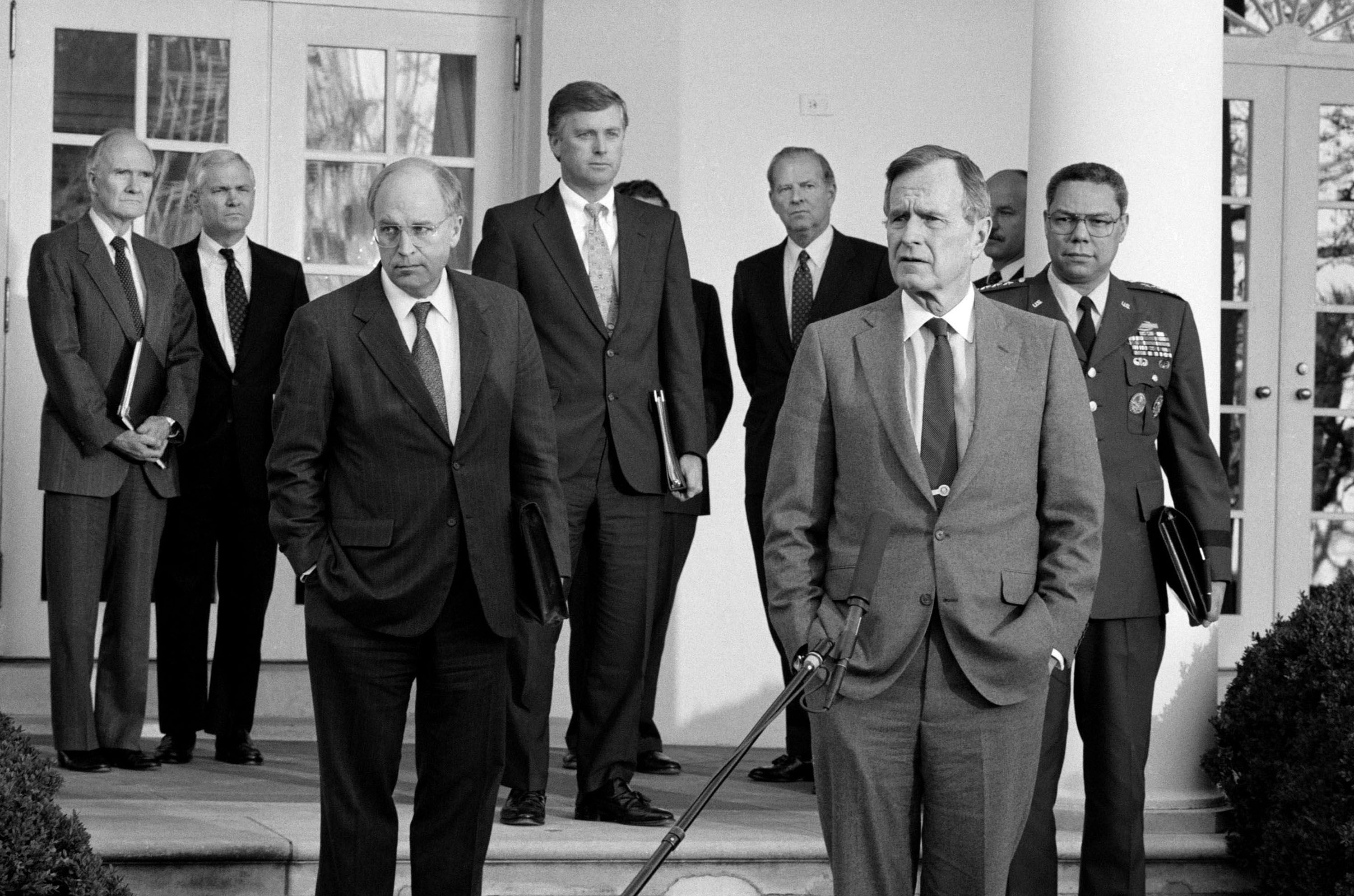Opinions/Editorials
See other Opinions/Editorials Articles
Title: NATE SILVER: 'We basically got the Republican race wrong'
Source:
Busines Insider
URL Source: http://www.businessinsider.com/nate-silver-trump-wrong-2016-5
Published: May 5, 2016
Author: Dan Turkel
Post Date: 2016-05-05 22:32:43 by cranky
Keywords: None
Views: 6887
Comments: 29
Donald Trump In September 2015, writer and statistician Nate Silver urged people to "calm down" about the possibility of Donald Trump winning the Republican presidential nomination. Two months later, he wrote that the media should "stop freaking out about Donald Trump's polls" and that Trump's odds were "higher than 0 but (considerably) less than 20 percent." Six months after that, after Ted Cruz had dropped out of the race but before John Kasich had done so, Silver wrote: "Donald Trump is going to win the Republican nomination." "Other than being early skeptics of Jeb Bush, we basically got the Republican race wrong," Silver wrote. It's easy to cringe at how, in August, for instance, Silver outlined the "six stages of doom" that he foresaw for Trump in the coming months — and how, in December, he updated the post to note that "the most difficult hurdles between Donald Trump and the Republican presidential nomination are still to come." So how did the site that prides itself on a numbers-based approach end up just another late-stage Trump bear with its tail between its legs? Silver has some ideas. For one, some of Silver's earliest Trump doomsday analysis was, by its own admission, in line with the theories of "The Party Decides," a theory that posits candidates must be electable and believers in the party's positions. By January, Silver was rereading the book: Either the book's hypothesis that functioning parties nominate strategic candidates is wrong, he said then, or the Republican Party is not a functioning one. But Silver isn't giving up on "The Party Decides" quite yet. So when, on Wednesday, Silver admitted that "in Trump, the Republican Party may have a candidate who fails on both counts," he unsurprisingly also argued for the "failings of the Republican Party as an institution." Silver wrote: To me, the most surprising part of Trump's nomination — which is to say, the part I think I got wrongest — is that Trump won the nomination despite having all types of deviations from conservative orthodoxy. He seemed wobbly on all parts of Reagan's three-legged stool: economic policy (he largely opposes free trade and once advocated for a wealth tax and single-payer health care), social policy (consider his constant flip-flopping over abortion), and foreign policy (he openly mocked the Bush administration's handling of the Iraq War, which is still fairly popular among Republicans). But Republican institutional failure alone is only one of three major facets of Silver's analysis, which simultaneously addressed Trump's success and Silver's (predictive) failure. The other two components are the incredible volume of media coverage of Trump and the tribal nature of Republican primary voters. On the latter, Silver said that Trump's appeal to "cultural grievance" worked. "It's a point in favor of those who see politics as being governed by cultural identity," he wrote, "as opposed to carefully calibrating one's position on a left-right spectrum." Statistical analysis is always still analysis and, as such, requires some assumptions. And though he didn't address it specifically in his post on Wednesday, Silver said in November that a statistical approach to presidential-campaign prediction is a hard problem because there's only so much data. Perhaps Silver's most prescient prediction came in November: "Unprecedented events can occur with some regularity." 
Post Comment Private Reply Ignore Thread
Top • Page Up • Full Thread • Page Down • Bottom/Latest
Begin Trace Mode for Comment # 21.
#1. To: cranky (#0)
But Republican institutional failure alone is only one of three major facets of Silver's analysis, which simultaneously addressed Trump's success and Silver's (predictive) failure. The other two components are the incredible volume of media coverage of Trump and the tribal nature of Republican primary voters. On the latter, Silver said that Trump's appeal to "cultural grievance" worked. Trump was right about the wealth tax. He was right about single payer health insurance. And he's right now about taking down state borders to health insurance sales. His current policy: appoint Scalias to the Supreme Court, and oppose abortion, with exceptions for rape (bad), incest (bad) and life of the mother (good) is imperfect theologically, but politically is far more likely to get abortion banned incrementally than my purism would. Trump is right to mock the Bush Administration's handling of the Iraq War - it was disastrous. And Trump is right about the cultural issues, which is to say: the Wall. This is why I like Trump and despise Republicans - he's right in all the places they're wrong.
We almost agree on that one. I call it "criminal",and he and those in his cabinet responsible for that illegal war should go to prison for invading Iraq.
That is pretty stupid when there was a congressional resolution authorizing the invasion.
That is pretty stupid when there was a congressional resolution authorizing the invasion. Who created it and put it before Congress for the vote after using the power of his office to influence the vote outcome?
Congress got the same exact intelligence information that the Administration had, including any doubts about the existence of WMDs. If you want to show your true colors by citing long discredited left wing moonbat talking points, then excuse me if I roll my eyes while you do so. ---------------- The CIA and most other US intelligence agencies believed before the war that Saddam had stocks of biological and chemical weapons, was actively working on nuclear weapons and "probably" would have a nuclear weapon before the end of this decade. That faulty intelligence was shared with Congress – along with multiple mentions of some doubts within the intelligence community – in a formal National Intelligence Estimate just prior to the Senate and House votes to authorize the use of force against Iraq. No hard evidence has surfaced to support claims that Bush somehow manipulated the findings of intelligence analysts. In fact, two bipartisan investigations probed for such evidence and said they found none.
I don't give a rabid rat's ass what you roll. You can roll Grand Island over and have a go at his butt for all I care. There are a few indisputable FACTS that negate any of your claims. One is that Saddam Hussein and Iraq under his leadership were responsible for the deaths of more fundie Muslims than every other nation in the world combined. Another fact is that Hussein was never a danger to the US,so WTF were we doing invading Iraq to start with? WHERE was the justification to spend American dollars and American lives to invade a nation and take out the leader who was no threat to America. Fact Two,Hussein and Iraq were no danger to Israel,and even if they had been it was none of OUR freaking business. Israel isn't a red-headed stepchild of the US,and is capable of taking care of herself. If she isn't,let her fall. No skin off our nose. Fact Three: Hussein and Iraq were a threat to the Saud family and to Saudi Arabia because Hussein,like every other tribal leader in the Muddle East INCLUDING KING ABDULLAH,dreamed of being the King of a United Arabia. Hussein would have taken down the House of Saud in the blink of any eye once he got a shot at it. Fact 4: King Abdullah and Saudi Arabia practically owned the Bush Crime Family. That is who bought Boy Jorge out of bankruptcy in the oil business,and gave him a 6 figure no-show "consulting job" that enabled Boy Jorge to buy the Texas Rangers and create a political support base. That's whey when a airliner full of Saud family members needed to haul ass out of America after the airliners hit the towers,the WH intervened and ordered the FAA to release the jet and let it go without searching it or questioning any of the occupants. Another FACT is that 15 out of the 19 hijackers were from Saudi Arabia. The Clinton Crime Family looks saintly compared to the Bush Crime Family of 3 generations of traitors,and counting.
You are probably too dense to realize that all of that drivel you posted is irrelevant to your claim that GWB was guilty of a crime for invading Iraq. He was authorized to do so and was legitimately supported by Congress in doing so, and did not usurp his authority by doing so. If you want to make the claim that all Saudis and Bushes are Satan, that Saddam Hussein was Jesus Christ, you can if you like, but that is a separate argument altogether.
Based on lies.
#22. To: Deckard (#21)
Based on lies. Shouldn't you be going to Freethoughtproject.com to look up dirt on some cop? It was based on available intelligence. So if you want to call the CIA, the State Department, the Demcocrats, the republicans and the intelligence agencies of numerous countries all engaged in an international conspiracy for some unknown purpose, then feel free. (cue spook music)
Defense Sec. Dick Cheney, Herbie Bush, Joint Chiefs Colin Powell
Top • Page Up • Full Thread • Page Down • Bottom/Latesteconomic policy (he largely opposes free trade and once advocated for a wealth tax and single-payer health care), social policy (consider his constant flip-flopping over abortion), and foreign policy (he openly mocked the Bush administration's handling of the Iraq War, which is still fairly popular among Republicans).
#2. To: Vicomte13 (#1)
Trump is right to mock the Bush Administration's handling of the Iraq War - it was disastrous.
#13. To: sneakypete (#2)
I call it "criminal",and he and those in his cabinet responsible for that illegal war should go to prison for invading Iraq.
#15. To: no gnu taxes (#13)
I call it "criminal",and he and those in his cabinet responsible for that illegal war should go to prison for invading Iraq.
#17. To: sneakypete (#15)
Who created it and put it before Congress for the vote after using the power of his office to influence the vote outcome?
#18. To: no gnu taxes (#17)
If you want to show your true colors by citing long discredited left wing moonbat talking points, then excuse me if I roll my eyes while you do so.
#20. To: sneakypete (#18)
#21. To: no gnu taxes, sneakypete (#20)
He was authorized to do so and was legitimately supported by Congress in doing so,
Replies to Comment # 21. He was authorized to do so and was legitimately supported by Congress in doing so,
#23. To: Deckard, *Neo-Lib Chickenhawk Wars* (#21)


End Trace Mode for Comment # 21.
[Home] [Headlines] [Latest Articles] [Latest Comments] [Post] [Mail] [Sign-in] [Setup] [Help] [Register]
